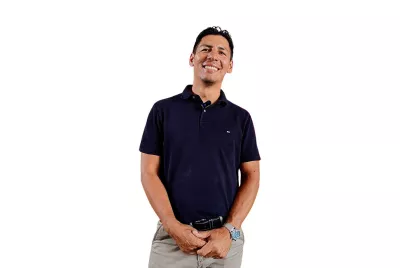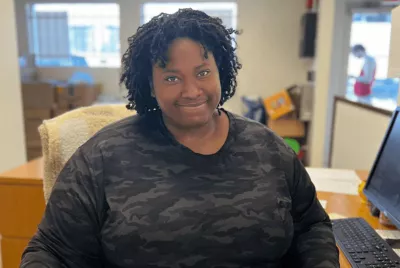Former Resident Uses Her Experience to Inform Her Role as a Covenant House Leader

On her 17th birthday, Heidi Huppert was sitting on a swing set at a school and began crying. Heidi was recalling her experience throughout the previous four years. Her parents had divorced when she was nine, and things took a turn for the worse. Her mother began dating someone who made their home unsafe so around age 13, Heidi would leave and spend a lot of time on the streets of Anchorage, Alaska, sleeping in apartment laundry rooms or abandoned buildings when she didn’t want to go home.
That day on the swings, when her friends asked why she was crying, she told them that she didn’t think she’d live that long.
“Which is a really scary thing to think about now that I’m 40 and I made it this far,” said Heidi. “Honest to God, I don't know what would have happened to me. A 13-year-old girl downtown in the city center, in the cold, walking around with a pocket knife in my pocket for protection,” she shared.
“It literally was a ticking time bomb, it was only a matter of time before something bad happened, before I’d be snatched up. And I was well aware of that future for myself.”
Now, Heidi works as the chief program officer for Covenant House Alaska, providing a safe place to sleep and services to young people experiencing homelessness at the same shelter in which she found refuge as a guarded young teen.
In 1994, the Covenant House Alaska outreach team offered Heidi a bed in the shelter. She says she remembers that they felt like strangers to her, and although she accepted, she did not trust the staff. Her primary concern: they asked a lot of questions, and she worried that she would be taken away from her Mom or be put in foster care. So, Heidi says she lied a lot, and though she had a sense that they knew she wasn’t telling the truth, her safety was more of a priority than anything else.
“I remember waking up in the morning to a staff person named Connie, who was a program coordinator. She made sure I had something to eat and had food to bring to school because I was in seventh grade at the time,” Heidi recalled, “It was pretty obvious I wasn’t eating regularly. Connie was kind, and I knew she knew I wasn’t telling the truth about my life, but there was a sense that if she built trust with me, that I would eventually let her in. There was a real warmth there and she made me feel really safe.”
When she was 20, she got her first job at Covenant House Alaska as a peer outreach worker and has been there ever since. It’s no coincidence that now Heidi does similar work as Connie, making sure the young people who walk through the doors of our Anchorage site feel the same trust and safety she did.
She recognizes the many systems that fail youth and says her career path led to Covenant House because she wanted to understand how those systems work to be a part of the solution for young people. She credits her shared experience with young people facing homelessness with preparing her for the many jobs she’s held at Covenant House.
“For a lot of young people, systems failing you is unfortunately a norm. I wanted to change it. Originally, I thought about becoming a police officer, but then I realized that it was really reactionary and I wanted to do more preventative things,” said Heidi. “I think it is important for [Covenant House] to hire people with lived experience. People who don’t have lived experience may not be able to as easily recognize signs and behaviors, but those who understand it can address it in a very real way.”
What Heidi says she wants our current residents to understand is that there are people who care. “It exists and it is really beautiful,” she said. “It might be really strange and feel really fake and you may be suspicious, but there really are people there who do what it takes so that you have a better future.”
Heidi has been known to really connect with the young people under the care of staff at our Anchorage location. She says it isn’t out of the ordinary for her and her colleagues to know a young person’s favorite color, to pick out Christmas presents, set youth up for the first day of school, attend court hearings, and be present for the birth of children.
When asked what she’d like to see in Covenant House’s future, she said, “I would like to see the number of shelter beds decrease while our stable and permanent housing options increase so that the experience of homelessness is disrupted early and never repeated because we are giving young people the education, tools, and opportunities to get out.”
In late 2020, during the height of the pandemic, our partners at Strive magazine invited Heidi to pen an editorial about her life experiences, her work at Covenant House Alaska, her leadership philosophy, and her aspirations. We invite you to read this article written in Heidi’s own words.
You might also like...
All storiesShelter Is Only the Beginning
From crisis to care: Find out what it's like when a young person enters our doors.


